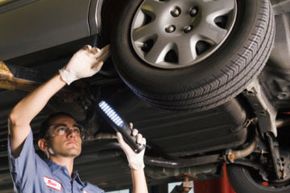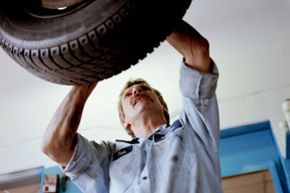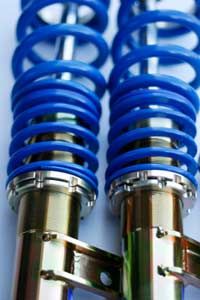The country's cargo shipments ride on air, and now your car can, too. Air suspension systems have long been used in the trucking world, but in the last decade or so, they've moved into the commercial world. Motorcycles, all-terrain vehicles, custom cars, performance cars -- even everyday commuter cars -- are using the suspension systems.
Changes in technology mean that systems are no longer clunky, slow and imprecise. Instead, they use fast, precision-based technology with advanced electronics that control everything from ride height to bag pressure, offering a smooth, controlled drive.
Advertisement
And it's about time, as the car's suspension system is an often-overlooked area. From a comfort and safety standpoint, your car's suspension is integral to how your car drives. Shock absorbers and coil springs help absorb and direct road force, maintaining wheel oscillation, jounce and rebound.
However, every time you add or take away weight to a vehicle, speed up or slow down, or turn left or right, this challenges what the shock absorbers and springs are capable of. Traditional stock shocks and springs are designed and installed with only a fixed set of situations in mind.
Air suspension systems essentially replace a vehicle's coil springs with air springs. The air springs are simply tough rubber and plastic bags inflated to a certain pressure and height to mimic the coil springs. But the similarities end there. By adding in an on-board air compressor, sensors and electronic controls, today's air suspension systems provide several advantages over all-metal, conventional springs, including near-instant tuning, and the ability to adapt handling to different situations and vary load capability.
Whether the system is manual or electronic, or installed by a weekend mechanic or a seasoned tech, air suspension can lower a car to improve its street cred, even out a heavy payload, or simply improve the ride of a vintage Detroit metal street monster.
Read on to learn more about this trend and what to look for when you want to give your car a lift.
Advertisement




